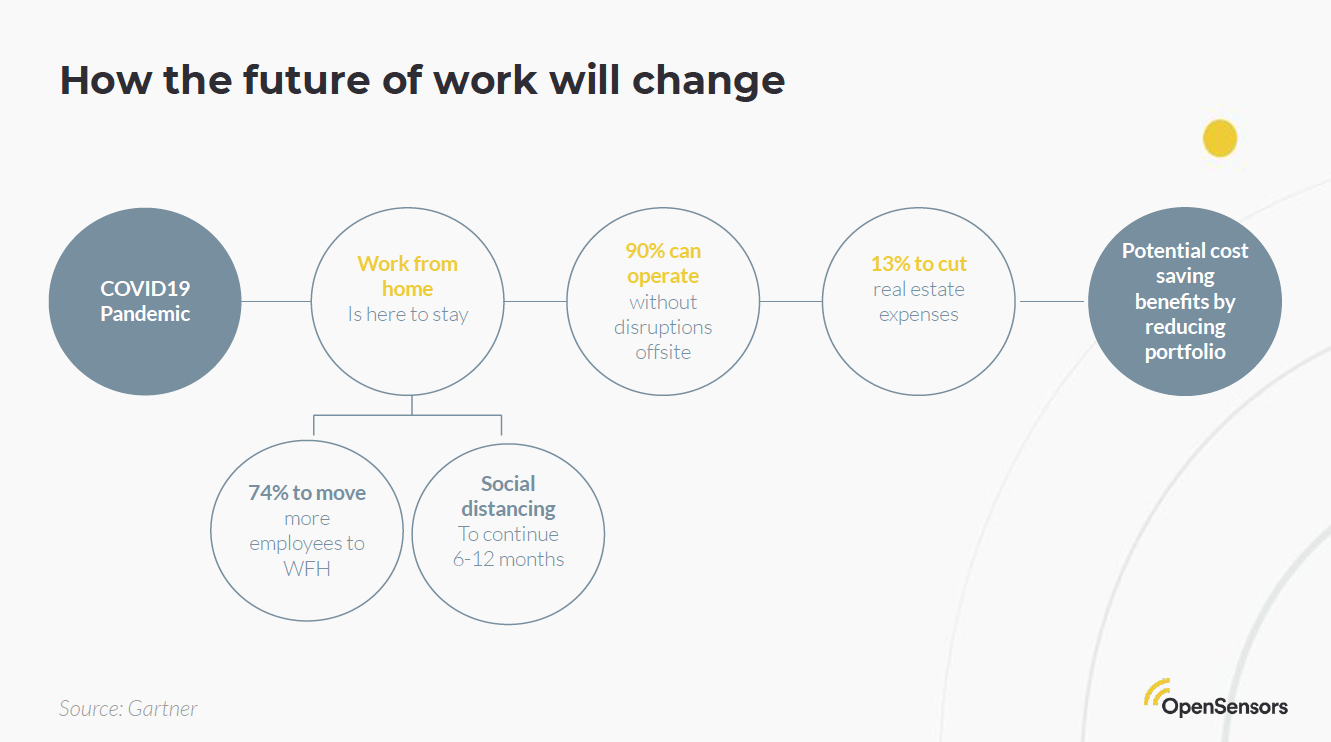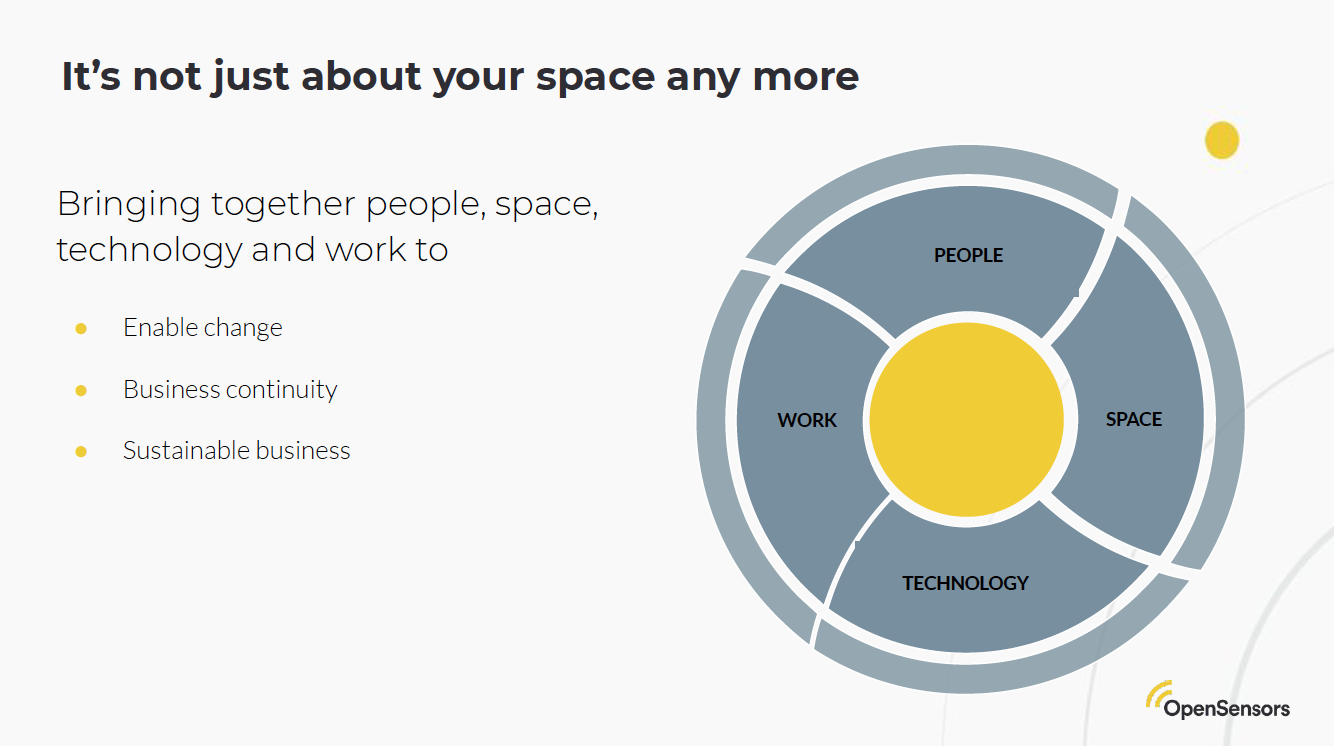Where we work and how we work will be very different after COVID19. Businesses will be forced to rethink how they will need to operate over the next 6-18 months. Here's what you need to start planning for.
Planning for the unknown
Recognising the aftermath of COVID19 will change the workplace as we know it means businesses need to start preparing agile return to work plans now, before quarantine rules are lifted. There will likely still be uncertainty even 12 to 18 months from now until a vaccine is produced, but it's all the more reason to stay proactive to anticipate more short term changes.
The well being, health and safety of employees is going to be the main driver for office re-opening plans to reduce further spread of COVID19.
What we do know is that social distancing will continue to form part of everyday life, whether in the workplace or at home and there will be a need to adapt workspaces to accommodate the new way of working. A large portion of the workforce will continue to work from home leaving some office buildings empty. Knowing this means businesses can begin reviewing their real estate portfolio and start planning.
So how can Facility and Property teams stay ahead and prepare before employees are allowed to return to the workplace?
Work closely with HR, IT, Procurement and departmental stakeholders
Start developing return to work policies and guidelines now with key stakeholders. The larger your workforce and sooner you need to start.
1. Lead discussions - Stakeholders will lean on you for direction to understand what protocols will be put in place for social distancing, such as whether seating arrangements for a bank of 10 seats should only be occupied by 4 people at any given time. More importantly what measures are in place for deep cleaning, through to what areas of the building are restricted from use like canteens or meeting rooms.
2. Identify who needs to go to the office - Work closely with HR and departmental stakeholders to narrow down key teams who need to come into the office and understand what roles or teams can continue working from home over the coming months or for a longer term.
This will give you an idea of the number of employees to phase back and whether the current workspace setup can accommodate this, taking into account social distancing rules will likely continue for another 12-18 months. This will give you and your stakeholders a baseline to make decisions around:
- Changing work patterns for those who need to be in the office e.g. working 2 weeks in onsite and 2 weeks remotely or incorporate shift work
- How to spread employees across the office or other locations to ensure social distancing is maintained
- Identifying what workspaces need to be adapted
- Replacing fixed equipment to facilitate mobile working e.g. desktops with laptops, fixed phones with cloud based call applications or call diversions to key individuals
- Managing the frequency of office deep cleans and maintenance suppliers
Identifying potential cost increases
3. Enabling mobile working in the office - Stay close to IT/Security stakeholders as there will be a direct impact to whether changes can be facilitated and supported by the team. They may need to:
- Increase network bandwidth
- Increase or set up VPN usage
- Reconfigure workstations to enable mobile workers in the office
- Order more laptops to replace desktop users or equipment like monitors for home users
- Security measures will need to be stepped up to ensure confidential information is safeguarded, but they’ll only be able to understand the scope of this based on the balance of employees working remotely or in the office
Calculate number of employees allowed in the office at any given time
4. Manage space capacity - Based on social distancing rules calculate the maximum number of people that can work on a particular floor or building. Can you repurpose certain spaces to accommodate more employees? For example, using a large 10 people meeting room for 3 people to work in.
Alternatively, there may be certain spaces that need to be restricted from use to prevent large crowds. Identifying this early on allows you to narrow down areas of the office to concentrate on and place immediate restrictions in areas that require less attention.
5. Manage cleaning protocols - Identify the high touch point areas such as door handles, equipment or bathrooms and set up protocols for usage. Consider whether you want to provide disinfectant products for individuals to clean after each use or whether you plan to increase the frequency of professional cleaning in these areas.
Take into consideration cleaning suppliers are going to be in high demand, so don’t wait to schedule these services, start the process now. Work with your Procurement team to pool a retainer of ad hoc cleaning suppliers, so you have flexibility to act quickly to unexpected situations.
Once you know what workspaces will be used or not, you can coordinate cleaning services in these areas much more efficiently.
6. Cost implications - Factor in operational cost increases over the coming months, especially with cleaning maintenance, insurance, office equipment or re-configuration. Personal protective equipment (PPE) is not cheap and you may need to outsource a lot more.
Whilst your C-Suite may demand continuing to operate at the lower end of budgets, you’ll need to push for a realistic view of what it will cost to operate in a post COVID19 era.
7. Start communicating back to work plans - Even if plans are not 100%, start communicating to your workforce now and let them know it's evolving everyday - they’re going to appreciate the updates as it will quash any fears and uncertainty they have.
8. Agile planning - It's difficult to predict what’s going to be the new norm in 12 months time but what has transpired over the last couple of months, is that businesses have become open to new ways of working and have recognised the workplace won’t be the same pre-COVID19. This will certainly influence any short term and future workplace strategies.
Given social distancing will continue for the foreseeable future, Facility and Real Estate teams will need to continue planning in the short term, stay proactive and anticipate further changes.
Key takeaways
- Start planning return to work guidelines with key stakeholders. Set up a steering committee to ensure key individuals are involved and information is cascaded to the relevant parts of the business.
- Identify who needs to go to the office - Narrow down critical staff who need to work in the office vs. those who can continue to work from home, will give you a manageable number to phase back.
- Identify the maximum number of people that can work on a particular floor or building. This will help determine your approach to phase people back in the office.
- Plan for likely budget increases in the short term. Expect cleaning costs to increase for at least 12-18 months and office reconfigurations to adapt the work environment.
- Start communicating plans - Manage employee expectations through continuous communication. Even if plans are not set in stone it will minimise any disruption or risks when they do return to the office.

Supporting you through COVID19
Sign up to our newsletter below for new releases on guidance we are sharing to help support you through COVID19. Its a challenging time right now, but our aim is to help make it easier to get through.



